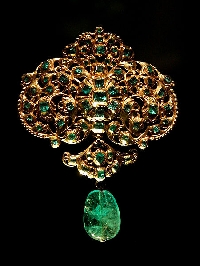Which metal to choose for jewelry
By Catalogs Editorial Staff

Know which metal to choose for jewelry before making that next big purchase
When preparing to buy or make a piece of jewelry, oftentimes the type of metal you choose is one of the first considerations. Not only are you choosing a metal for its color and appearance, you also want to know how durable the metal is, how pricey, and whether it will cause an allergic reaction in the wearer.
Metal Allergies
Many people find that, when they wear certain pieces of jewelry, or the snap of their jeans rubs against their skin, they break out into a rash. It can be red and itchy and extremely uncomfortable. The reason for this is usually a reaction to nickel, a cheap metal used as an alloy added to other metals or used alone in cheaper costume jewelry, zippers, etc.
Some people may also react to copper (used as an alloy in silver or used alone for it’s beautiful reddish luster), but this is less common. If you are buying or making jewelry for someone with a metal allergy (or if you don’t know if they react to metals), it would behoove you to opt for better quality materials. Precious and hypoallergenic metals have little to no nickel or copper, and are less likely to cause a reaction.
Precious Metals
The big precious metals for fine jewelry are gold, silver, and all members of the platinum family (including rhodium and palladium). Gold, of course, is still the standard in heirloom and engagement/wedding pieces, though this is changing somewhat. The finest gold is 24 karat, but 24k gold is soft and not good for pieces to be worn daily (such as wedding bands). To make this precious metal more durable, alloys are mixed in to create 10, 14, or 18 karat gold. The higher the number, the purer the metal, and the more expensive. For those who are allergic, higher karats are recommended.
~
Silver still rivals gold for popularity. Many people like the look of silver, since it tends to go with nearly everything, and its affordability since it is much less expensive–even in its purest form–than gold. Standard sterling silver–the good stuff–is indicated by the number 925 stamped somewhere on the piece (inside the band of a ring, on the back of a pendant, etc.), which means that it contains 92.5% silver. Fine silver is beautifully lustrous and contains 99.9% silver, but is very soft and bends easily.
Platinum is the most expensive of the precious metals. It is rare (though gaining in our popularity contest), heavy, and extremely durable. Prized by those who can afford it, Platinum tends to be used in its purest form, due to the metal’s inherent strength.
Non-Precious Metals
Apart from the jewelry store standards, there are a wide array of other metals available for decorating ones person.
Titanium, a beautiful silver-white metal, is the strongest metal in existence. It is lightweight and nearly indestructible (a great wedding ring option for someone who works with their hands), and also happens to be completely hypoallergenic. However, due to its hardness, it can’t be resized should your ring size change.
Tungsten is another strong metal, more durable than gold, with an industrial steel-grey look. This metal is more scratch resistant than even titanium, and is another great choice for manual laborers. Though, like titanium, it cannot be resized.
Stainless steel is both cheap and durable, and is rising in popularity in more edgy, alternative pieces. Use this for fashion wear, though not typically for wedding or engagement rings, as it is not as durable as some finer metals.
Copper should also get an honorable mention here. Though it’s true that some people are allergic to it, the allergy is rare and there are those who absolutely love the look and longevity of copper. Copper has the unique ability to patina prettily over time, taking on darker browns and even greens as the metal oxidizes. If going for an antique-y look, copper may be just the thing.
References
Zales: Metals in Jewelry Making
WebMD: Nickel (Jewelry) Allergy
Popular Savings Offers











